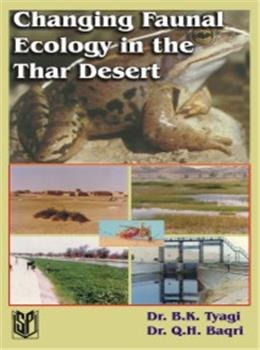Changing Faunal Ecology in the Thar Desert
Changing Faunal Ecology in the Thar Desert is backordered and will ship as soon as it is back in stock.
Couldn't load pickup availability
Genuine Products Guarantee
Genuine Products Guarantee
We guarantee 100% genuine products, and if proven otherwise, we will compensate you with 10 times the product's cost.
Delivery and Shipping
Delivery and Shipping
Products are generally ready for dispatch within 1 day and typically reach you in 3 to 5 days.
Author(s): B. K. Tyagi & Q.H. Baqri
Publisher: Scientific Publishers
Language: English
Edition: 1st Edition (2023)
Binding: Hardbound
Pages: 367
Size: 6.5 x 9.75 inches
Weight: 980 g
Book Type: Reference Book
About the Book
This authoritative volume presents a rich and multidisciplinary exploration of faunal ecology in the Thar Desert, one of the most unique and ecologically sensitive regions in India. The book features sixteen expert contributions, offering insights into the behavioral, ecological, and physiological adaptations of animal species ranging from protozoa to mammals.
Key highlights include:
-
In-depth analysis of ecological changes influenced by the Indira Gandhi Nahar Pariyojana (IGNP) — one of the largest canal irrigation projects globally
-
Case studies on animal distribution, feeding, breeding, and parasitic relationships
-
First-hand documentation of behavioral and habitat transformation due to anthropogenic and environmental factors
-
A detailed bio-bibliography of Professor Dr. Ishwar Prakash, a pioneering figure in desert ecology
Key Features:
-
Written by 24 experienced scientists and researchers
-
Focuses on ecological shifts, biodiversity, and conservation management
-
Offers valuable references for future research and field-based applications
Ideal for:
-
Researchers, ecologists, and conservation biologists
-
Students of wildlife science, zoology, and environmental studies
-
Professionals involved in arid zone management and biodiversity conservation
A definitive reference for understanding the rapidly evolving faunal dynamics of the Thar Desert and the broader implications for desert ecosystem management.





